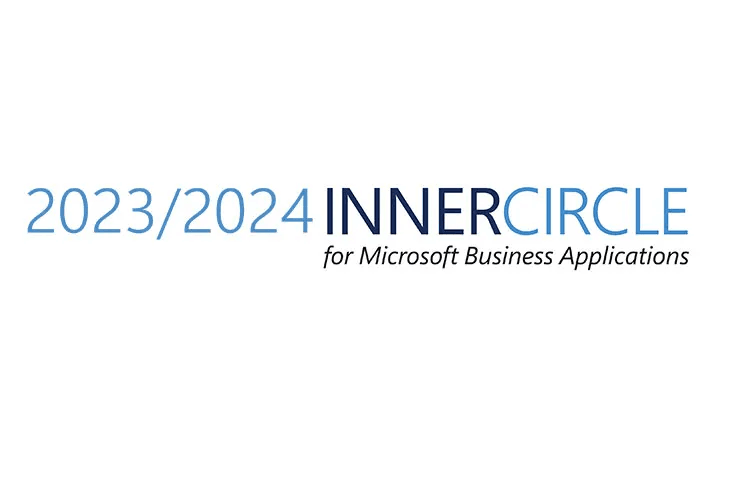
Microsoft Dynamics NAV 2018 has only been on the market for a few weeks - and the next milestone in product development can already be seen on the horizon: Under the code name "Tenerife", Microsoft CRM and ERP merge into a new system - first in the cloud, later in a locally installable version. Christian Koch, Team Leader Presales International at the COSMO CONSULT Group, reveals in an interview which innovations Dynamics NAV 2018 has to offer and what users can look forward to in the future.
Christian, you are team leader for international presales at COSMO CONSULT and therefore always have access to the latest Microsoft technologies. You are one of the few people who have seen Microsoft Dynamics NAV 2018 in action. What can we expect from the new version?
Microsoft is introducing many features in the new Dynamics version aiming to simplify usage and make it more efficient. For example, user preferences have been improved. Users can now make switches in the role center without logging in again. In addition, the setup options have been centralized, which simplifies setting up a client considerably. In the user tasks, you will be able to assign tasks to users and monitor their status.
But the most important innovation is probably the improved integration of Microsoft Dynamics NAV into the Office world: Power Bi can now be linked to entities such as articles; Microsoft Flow can be used in conjunction with the workflow module; and there are Excel report templates that greatly improve and accelerate the process of evaluating data. Microsoft is also doing more work in the area of artificial intelligence: Microsoft is integrating machine learning and cognitive services, for example, to enrich article attributes by analyzing article images.
"Integration" is certainly an important keyword when it comes to Microsoft. Recently there has been a lot of talk about Microsoft's products working together more closely. Where are things headed?
To "Tenerife". It is in quotation marks, because "Tenerife" is the code name for the integration of Microsoft Dynamics NAV into Microsoft Dynamics 365. With Dynamics 365, Microsoft is introducing a new generation of business applications that break down the boundaries between ERP and CRM. Under this name, Microsoft is offering different business apps for CRM, finance, operations, and marketing, etc. Microsoft Dynamics NAV will be released as an all-in-one business suite consolidated under Microsoft Dynamics 365. And the code name for this is “Tenerife”, as I said. The first version will be released in the spring of 2018, and will initially only be available in the cloud, but it will still have the full functionality of NAV. Following that, the on-premises version of Microsoft Dynamics 365 “Tenerife” will be released. Users will still be able to choose whether they want to work on-premises or in the cloud.
What do these changes mean for the users?
With the new name, Microsoft is slowly but surely saying goodbye to the conventional concepts of ERP and CRM, and going in the direction of business apps - regardless of which product suite they come from. The technologies underlying Dynamics 365 are Microsoft Azure and Common Data Services. They make seamless exchange of data between the applications possible: This applies to both Microsoft apps and third-party apps. However, this also goes hand in hand with a stronger focus on individual users and their individual requirements. In their daily work users often only need small components of a system, not all the functions of a comprehensive ERP solution. The modular structure of the apps in Dynamics 365 enables lean and efficient mapping of customer-specific processes. And so it will be easier to implement business apps in the future because they are leaner and save you time.
Listening to what is currently being reported, you quickly get the impression that in the future everything will run in the cloud. And you have already pointed out that Microsoft Dynamics 365 “Tenerife” will initially appear as a cloud variant - even before the on-premises variant. Is Microsoft pursuing a cloud strategy?
Yes, definitely! And there are many benefits to doing this: worldwide availability of your own business applications, collaboration across locations, ability to scale resources freely as needed, and easier connectivity to other applications inside and outside the Microsoft world - and those are just a few reasons. Nevertheless, Microsoft will continue to support classic operating models. In the end, customers decide whether they prefer working in the cloud or on-premises - or use a combination of both.
What role do the Microsoft partners have to play in all this?
I went to Directions EMEA a few weeks ago in Madrid, which is Microsoft's largest partner conference with 2,200 participants from around the world. There, Microsoft made a very clear commitment to NAV and its partners: The success of Microsoft Dynamics NAV is a result of the partner network. And just as Microsoft's product portfolio is increasingly geared towards individual user requirements, COSMO CONSULT also is taking part in this trend. Thinking in stereotypes of ERP or CRM categories is a thing of the past for us. The focus is rather on the individual requirements of the customer, so the question is: What business applications and operating models can we offer to our customers to make them even more productive? And with Microsoft, we have a partner on our side that lets us serve our customers at all levels.

Keywords
More similar news articles
Found what you were looking for?
Start your intelligent search now






